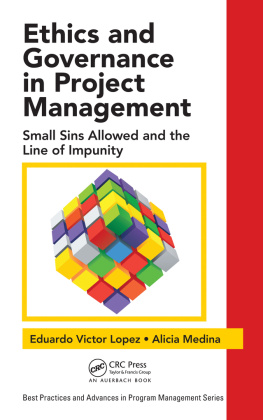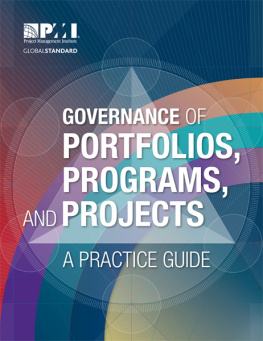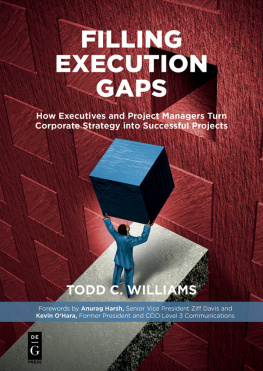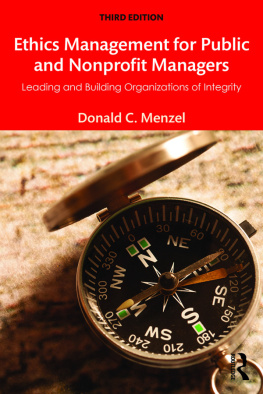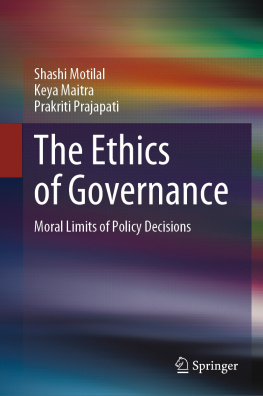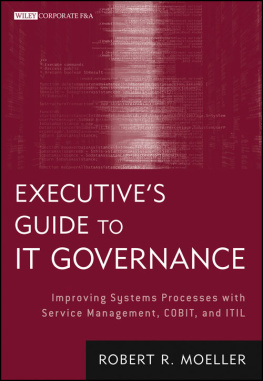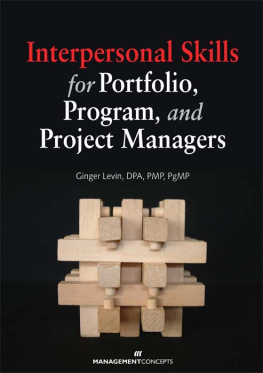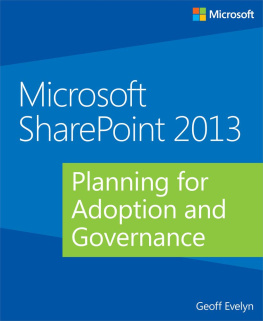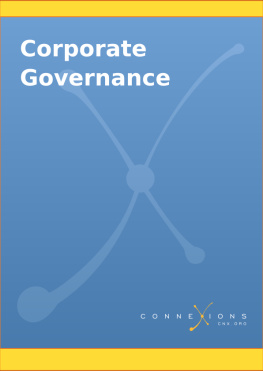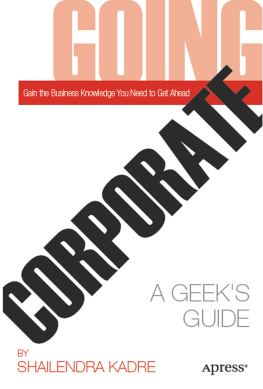Ethics and Governance in Project Management
Small Sins Allowed and the Line of Impunity
Best Practices and Advances in Program Management Series
Series Editor
Ginger Levin
RECENTLY PUBLISHED TITLES
Situational Project Management: The Dynamics of Success and Failure
Oliver F. Lehmann
Ethics and Governance in Project Management: Small Sins Allowed and the Line of Impunity
Eduardo Victor Lopez and Alicia Medina
Becoming a Sustainable Organization: A Project and Portfolio Management Approach
Kristina Kohl
Improving Business Performance: A Project Portfolio Management Approach
Ramani S
Leading and Managing Innovation: What Every Executive Team Must Know about Project, Program, and Portfolio Management, Second Edition
Russell D. Archibald and Shane Archibald
Program Management in Defense and High Tech Environments
Charles Christopher McCarthy
The Self-Made Program Leader: Taking Charge in Matrix Organizations
Steve Tkalcevich
Transforming Business with Program Management: Integrating Strategy, People, Process, Technology, Structure, and Measurement
Satish P. Subramanian
Stakeholder Engagement: The Game Changer for Program Management
Amy Baugh
Making Projects Work: Effective Stakeholder and Communication Management
Lynda Bourne
Agile for Project Managers
Denise Canty
Project Planning and Project Success: The 25% Solution
Pedro Serrador
Project Health Assessment
Paul S. Royer, PMP
Ethics and Governance in Project Management
Small Sins Allowed and the Line of Impunity
Eduardo Victor Lopez
SKEMA Business School, Lille, France
Alicia Medina
Umea University, Sweden
CRC Press
Taylor & Francis Group
6000 Broken Sound Parkway NW, Suite 300
Boca Raton, FL 33487-2742
2016 by Taylor & Francis Group, LLC
CRC Press is an imprint of Taylor & Francis Group, an Informa business
No claim to original U.S. Government works
Printed on acid-free paper
Version Date: 20160524
International Standard Book Number-13: 978-1-4987-4383-9 (Hardback)
This book contains information obtained from authentic and highly regarded sources. Reasonable efforts have been made to publish reliable data and information, but the author and publisher cannot assume responsibility for the validity of all materials or the consequences of their use. The authors and publishers have attempted to trace the copyright holders of all material reproduced in this publication and apologize to copyright holders if permission to publish in this form has not been obtained. If any copyright material has not been acknowledged please write and let us know so we may rectify in any future reprint.
Except as permitted under U.S. Copyright Law, no part of this book may be reprinted, reproduced, transmitted, or utilized in any form by any electronic, mechanical, or other means, now known or hereafter invented, including photocopying, microfilming, and recording, or in any information storage or retrieval system, without written permission from the publishers.
For permission to photocopy or user material electronically from this work, please access www.copyright.com (http://www.copyright.com/) or contact the Copyright Clearance Center, Inc. (CCC), 222 Rosewood Drive, Danvers, MA 01923, 978-750-8400. CCC is a not-for-profit organization that provides licenses and registration for a variety of users. For organizations that have been granted a photocopy license by the CCC, a separate system of payment has been arranged.
Trademark Notice: Product or corporate names may be trademarks or registered trademarks, and are used only for identification and explanation without intent to infringe.
Visit the Taylor & Francis Web site at
http://www.taylorandfrancis.com
and the CRC Press Web site at
http://www.crcpress.com
To my lovely wife, Nandit@. E. L.
To my dearest family. A. M.
Despite all the attention devoted to governance over recent decades, project failures continue to shake the field, suggesting that further investigation is necessary. The recurrence of project governance difficulties made us question the basics of what had hitherto been taken to be unquestionable knowledge. As a result of the underlying cognitive unrest, a revision of the approaches to ethics in the project world led to the introduction of new concepts such as Small Sins Allowed, the Line of Impunity, and the Ethics Cube .
With this book we aim to provide business students and project practitioners (managers, team members, and other project stakeholders) with an understating of the relationship between ethics and project governance, along with the influence exerted by the context.
In order to enrich students experience, we have included case studies with questions and reflective exercises. All the cases come from our real-life project experiences or have been collected during focus groups and workshops in the United States, Latin America, and Sweden.
Our stance is that a dissonance between business and society ethics may lead to improper behavior, which, together with outdated governance practices, may result in project failure. The ethical components of project management need to be understood and the common sources of deviance identified in order to apply new approaches to project governance that may lead to successful projects.
We start with a historical perspective of the evolution of ethics, oriented particularly toward the fundamentals of ethics that govern individual and collective behaviors within the project world. Then, aspects of the ethical approaches and contrasting views are presented and discussed. This is followed by an exploration into the fields of decision-making models, economization, double standards, honesty, and codes of ethics. Aspects of the context, such as perception, motivation, and culture, are also discussed before analyzing corporate and project governance.
At this point, the book introduces two important new concepts, the Small Sins Allowed and the Line of Impunity, which together can be the foundation for a renewed view of project governance. The Small Sins Allowed establish a level above which adherence to ethical standards is expected. The Line of Impunity relates to the perception that privileges are entitled at certain positions. Then, ethical issues and ethical dilemmas are reviewed and an ethical hierarchy model is introduced to explain how ethical issues should be addressed according to their moral intensity.
Later, an Ethics Cube is depicted to illustrate the existence of different sets of ethical values such as professional ethics, family ethics, and general ethics. It also illustrates the conflicting relationship between those sets of ethical values and personal interests, allegiances, and the presence of opportunity. This concept is expected to generate awareness about the complexity of managing multiple sets of ethical values together with other compelling factors. Shuffling the cube may result in a professional ethics affected by selfishness, idealism, pragmatism, and even by other ethical sets.
The book concludes by answering the question of how we can improve governance in projects, and presenting some guidelines for ethical leadership.
We would like to stress our disagreement with the prevalent dominant view that ethics can be steered solely by governance. We believe that ethics in project management goes beyond rules and regulations, and that peoples actions have an impact on governance. We call for a paradigm shift, a new mindset understanding that professional ethics conflicts with personal factors, where rules and principles are applied selectively, and where the impact of culture and context are incorporated into the daily life of projects.

